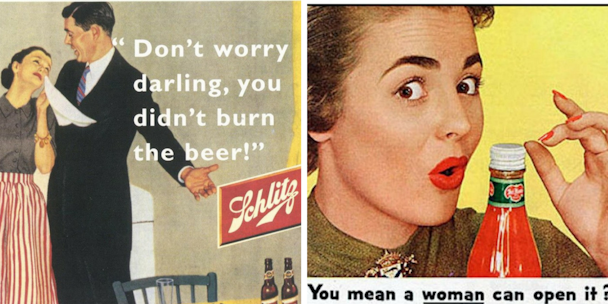Out of the kitchen: Why the ASA clamping down on gender stereotyping is just the start
New guidelines banning gender stereotyping in advertising come into force today, a watershed moment for the industry, which should open the doors to a new era of inclusive creativity.

Why clamping down on gender stereotyping is just the start
Stereotypes matter because they provide the framework by which we navigate and understand the world around us. They help to shape the expectations we have for ourselves and each other. Unconscious bias, by its very nature, is built upon the visual shortcuts and cultural language we use to represent people. It is also present in the tacit omissions and lack of media representation faced by significant swathes of the population.
In advertising, those visual shortcuts have historically taught us a woman’s place remains firmly in the kitchen. With research from the Geena Davis Institute on Gender in Media showing that women are almost half as likely (48%) than men to be depicted in the kitchen in advertising.
It is an ecosystem which makes the ASA guidelines on gender stereotyping; guidelines that come into force today, such a watershed moment for the industry. A collective realisation and reflection of the power of advertising to shift culture. Stereotypes matter because they serve to dehumanise. When advertising serves to diminish an individual to little more than a caricature, it inadvertently contributes to a collective lack of empathy which helps to undermine, and in worst cases, brutalize perceptions.
Unstereotype advertising
While the ASA guidelines on gender stereotyping mark a step in the right direction, it is clear that gender is just the beginning of a journey that must extend well beyond the realms of gender. As Aline Santos, executive vice president of global marketing and chief diversity and inclusion officer at Unilever, explains the ASA ban marks an important step in helping stamp out regressive portrayals, but there is “no silver bullet.”
“To address this complex and nuanced topic we need systemic change to happen within the companies that are creating advertising. As advertisers our role is not just to remove the bad, but to advance more progressive, modern and empowering characters that help to flip stereotypes on their head, challenge conventions and change culture for the better.”
This is what Unilever has sought to do with the United Nations' women-led Unstereotype Alliance, a coalition of companies that aims to achieve the eradication of stereotypes and advance positive portrayals of all people.
Stereotypes are bad for business
Tackling stereotypes is not just good for society, but for business. By failing to represent or recognise consumers in their entirety, brands can find themselves operating in a highly distorted market. Even in 2019 entire swathes of the population are both overlooked and under-represented.
According to research from UK by UM, over half (52%) of consumers believe that the LGBT+ community is invisible in advertising. The research also underlined the fact that the LGBT+ community is a much larger percentage of the market than previously estimated. While ONS data suggests that 2% of the population is lesbian, gay or bisexual, its research reveals that in fact 26% of the population does not identify as straight, equating to a market of over 14 million people.
UK by UM research shows that two-thirds of those with physical disabilities believe society tries to “sweep them under the rug.” However, over half of all consumers (54%) want to see more people with physical disabilities in ads, while more than six in 10 (63%) consumers believe that seeing more disabled people in ads helps to remove the stigma around them.
Diversity behind the camera
Of course, this drive to eradicate stereotypes and remove stigma cannot happen without greater diversity in who is making the work and are renewed focus on action. Projects such as #ChristmasSoWhite and #EasterSoWhite, campaigns that not only successfully shone a light on the lack of diversity in advertising but helped to provide a solution by creating more diverse imagery which the industry could use for free, are a testament of the power of the creative community to drive more inclusive representation.
As Ali Hanan, founder and chief executive of Creative Equals, notes, there are growing movements around being pan-sexual, non-binary and gender fluid. She urges the creative industry to embrace ending stereotypes as ‘your new brief’ explaining that we simply cannot afford to stop at gender. “We need to go beyond and look deeply at other kinds of stereotypes, around race, age, disability, polarised society, advertising has the power to shape an inclusive world, for everyone,” she adds.
The industry needs to go further than getting women out of the kitchen and ending the curse of the perennially incompetent dad. For brands cannot possibly hope to create culture if they don’t adequately represent it.
Nicola Kemp is managing editor of BITE, at Creativebrief and on the advisory board of Creative Equals.
